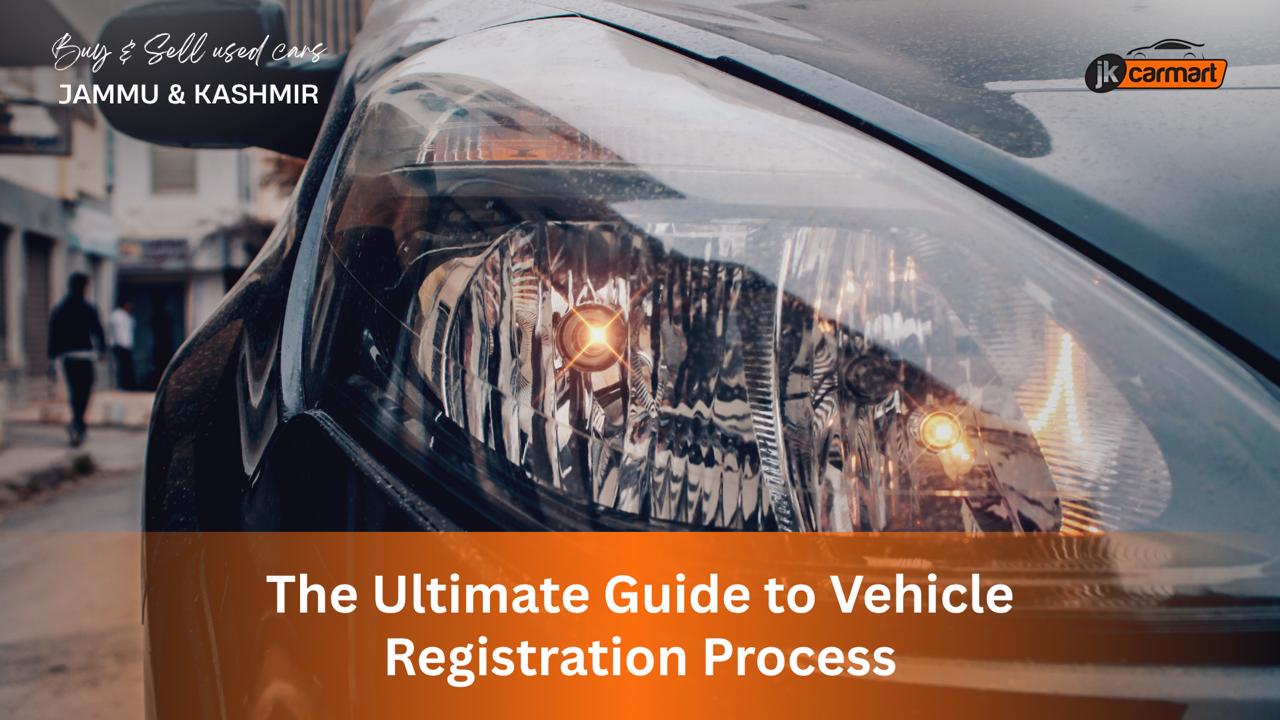So you’ve finally chosen your new vehicle. Or perhaps you’ve bought a good second-hand vehicle that meets your budget and needs. Now comes the less glamorous but obligatory part: getting your car legally registered so you can actually drive it onto the road without fear.
But here’s some good news, car registration in India these days isn’t like it was a few years ago. In this new digital age, with online systems being there, all the heavy lifting is done by dealerships or can be performed from your laptop. But it’s good to know what’s going on behind the scenes, what’s your role in this process and how to steer clear of unnecessary delays.
In this guide, you will learn what vehicle registration really is, the new and second-hand vehicle registration process, the online vehicle registration process, common mistakes to avoid, and why vehicle registration really matters.
1. Understanding Vehicle Registration
In plain terms, Vehicle registration is recording your vehicle with the government. They will issue you a registration certificate (RC), license plates, and update your vehicle’s details against your name in their database.
This makes tracking easier, ensures the vehicle is as per local regulations, and is evidence that you legally own the vehicle for tax and road use.
2. New Vehicle Registration Process
If you’re purchasing a brand-new car, here is some good news: dealerships will generally deal with the registration for you. You select your car, pay, and sign papers, and the dealer gets your documents uploaded to the RTO (Regional Transport Office) by the Parivahan Sewa system for registration.
What you need to provide to the dealership:
- Proof of address and identity (Aadhaar, Passport, Voter ID, etc.)
- Copy of PAN card
- Temporary registration slip (generally supplied by the dealer)
- Insurance certificate
- Pollution Under Control (PUC) certificate
- Form 20 (application for registration, generally completed by the dealer)
- Invoice and road tax payment
The dealer will get these documents ready, along with your engine and chassis numbers of your vehicle and pay the registration amount on your behalf. In most states, you get your RC (Registration Certificate) in a few days to a week or two, sometimes even at your home, or you may pick it up from the dealer.
Your intervention here is zero, but you can monitor the registration process, request your application number, and trace your RC status online through the Vahan portal.
Also Read: Second-Hand Cars: Save Money Without Compromising on Quality
3. Second-hand Vehicle Registration Process
When you purchase a second-hand vehicle, the seller will assist with documents, but the re-registration (in case of a change of state) and transfer of ownership will need more effort from your side.
This is normally what you will have to do:
- Obtain the current RC from the seller along with a sale deed.
- Obtain Form 29 and 30 from the seller, which includes the transfer of ownership.
- Submit a PUC certificate, valid insurance, and identity/address proof.
- Deposit transfer fee and road tax if it’s a change of states.
- If the vehicle was bought on loan, obtain the Form 35 and NOC from the financier for hypothecation cancellation.
- Submit all documents at your RTO or upload them on the Vahan portal (vahan.parivahan.gov.in).
- Visit the RTO if they require a physical verification of the vehicle.
After the approval, you will be issued the renewed RC in your name. Remember that until the transfer process is completed, you’re not the actual legal owner, and the original owner can still be held accountable for traffic offences for the vehicle.
4. What if you wish to do it online?
Much of the registration and transfer process these days has been streamlined by India’s Parivahan Sewa portal. In most states, you can:
- Submit forms and upload documents online
- Make payments online
- Book RTO appointments
- Check the status of your RC or transfer application
To do this:
- Visit vahan.parivahan.gov.in.
- Choose your state and service (new registration, transfer, renewal of RC, etc.).
- Provide details, upload scanned documents, and pay the fee.
- Book an appointment and visit the RTO if physical authentication or biometrics are needed.
- Keep the receipt and application number to check the status of your application.
Though not all RTOs are 100% online as of yet, most cities are, and even in smaller towns, a large part of the data entry and payment can now be done online, minimising queuing time at the counter.
5. Why is Vehicle Registration Necessary?
You cannot legally drive on Indian roads without registration. RC is evidence that your vehicle is legally accepted, you have paid road tax, and your vehicle belongs to you. You will be penalised and your vehicle impounded if caught without it.
Beyond legality, registration ties into your insurance and resale value. Without a valid RC, your insurance claims can get rejected, and selling your car later becomes a nightmare.
6. Common Mistakes To Avoid
- RC transfer delays in second-hand vehicles: Most customers do this, but there will be penalties and legal problems, so you should aim to get it done as soon as possible.
- Failure to verify hypothecation status: If the previous owner has not cleared the loan, you will face delays in your RC being updated.
- Incorrect address: Your RC must be up to date with your current residence; otherwise, you could have problems claiming insurance.
- Not keeping receipts: Keep payment receipts and application receipts for future reference.
Also Read: How To Navigate the Transfer Process Smoothly
7. Conclusion
In this new digital age, new car registration is more or less a problem-free, dealer-led process, but do keep an eye out until you own your RC. For second-hand vehicles, you’ll need to be more hands-on, or you could opt for online service or visit the RTO with your documents in hand.
With the Parivahan portal and RTO digitalisation, registration is not as intimidating as it used to be a decade ago, but it still requires your attention to detail. As long as you stay organised, keep copies of everything, you’ll handle your vehicle registration without much hassle, and ensure that your car is road-legal and ready for all the road trips you’ve been planning.





